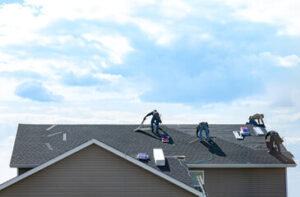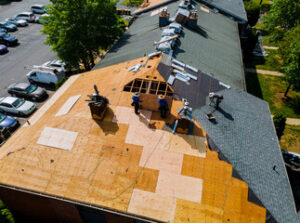Plumbing is a trade that impacts daily living, from access to clean water and draining systems to eliminate waste safely. For those interested in the industry, there are many career paths that offer a chance to work with hands-on plumbing and contribute to society’s advancements in technology.

Plumber Oceanside CA installs and repairs pipes, fixtures, and appliances such as sinks, toilets, showers, and water heaters. They read blueprints and building codes to determine the location and arrangement of piping, and they use specialized tools to inspect for leaks, clogs, and other problems. Some plumbers also work on gas lines and water heating equipment.
The plumbing industry requires a combination of technical skills and soft skills to succeed. Plumbers must have good critical thinking and analytical problem-solving abilities to identify and resolve issues. Strong communication skills are essential to explaining complex plumbing solutions to customers. The ability to work as part of a team is also important for plumbers, who often collaborate with other professionals on large projects.
To become a plumber, you typically need a high school diploma or equivalent and complete a vocational program that includes classroom instruction and practical training. Many programs offer a four- to five-year apprenticeship, which provides paid on-the-job training and allows you to earn a wage while learning the trade. Plumbers may choose to join a union, which offers additional training and career advancement opportunities.
While a plumbing degree can prepare you for the basics of the job, you must on-the-job experience to learn the more advanced aspects of pipe installation and maintenance. This includes working with different types of pipes, identifying the causes and effects of plumbing problems, and resolving those problems using best practices.
A thorough plumbing inspection includes checking the visible parts of your piping for leaks, breaks, corrosion, and improper slope. It also includes examining all drain pipes, including p-traps and overflow drains, for clogs, leaks, and how well they flow. Plumbers will check all faucets, showerheads, and toilets for leaks, unusual noises, spraying water, and other signs of problems. They will also test the water pressure at each fixture and the water heater for efficiency and proper operation. They will locate cleanouts and assess the condition of the sewer line, including its connection to the municipal wastewater system.
Replace the Washer or O-Ring
Plumbing is a skilled trade that requires extensive knowledge and hands-on experience. Plumbers install and repair piping, fixtures, and appliances like toilets, faucets, showers, and water heaters. They also inspect and maintain these systems to ensure they are functioning properly. Plumbers must be able to read and interpret blueprints and building codes when installing new plumbing systems or making repairs to existing ones.
They may also need to test water flow rates to make sure they are adequate for fixture use. Plumbers often work with contractors, architects, engineers, and construction teams to ensure that plumbing is designed and built correctly in new building projects. Plumbers are also responsible for obtaining any necessary permits and inspections.
Customer Service: Plumbers communicate with customers to understand their plumbing needs and explain pricing and options. They also resolve any issues that arise during the course of a job. This can include explaining how to operate newly installed fixtures, answering questions about existing plumbing, and providing advice and recommendations.
Visual Inspection: Plumbers will examine all visible pipes and fixtures for leaks, damage, or corrosion. They will look at the slope of horizontal pipes to make sure they are not kinking or collecting debris, and they will check drains for signs of blockages, proper slope, and solid connections. They will also take note of any unusual noises coming from plumbing fixtures.
Gas Lines: If your home uses natural gas for heating, cooking, or hot water, a plumber will inspect the gas lines to make sure they are in good condition and that all connections are secure. They will also test for proper flow rates and water pressure to ensure that your home is getting the amount of gas it needs.
Plumbing is a complex and vital part of your home’s infrastructure. Plumbers are responsible for installing and repairing the pipes, fixtures, and appliances that keep your family safe and comfortable. They must be able to diagnose problems quickly and accurately, and they must have the skills and tools to fix them efficiently. If you’re thinking about becoming a plumber, or if you need one for a plumbing emergency, be sure to choose a licensed, insured, and experienced professional.
Reassemble
Plumbers use their mechanical skills to repair and install pipes, fixtures and appliances that facilitate water and gas distribution in homes and businesses. They also inspect plumbing systems to ensure they adhere to local codes, ensuring the health and safety of building occupants. Plumbers often encounter issues like leaks, improper venting of gas appliances, or cross-connections between water sources, which they can correct with the right tools and knowledge. Soft skills, such as communication and problem-solving, are also important for plumbers to have. For example, when disassembling a faucet, they must turn off the water supply before removing parts to prevent flooding the work area.


